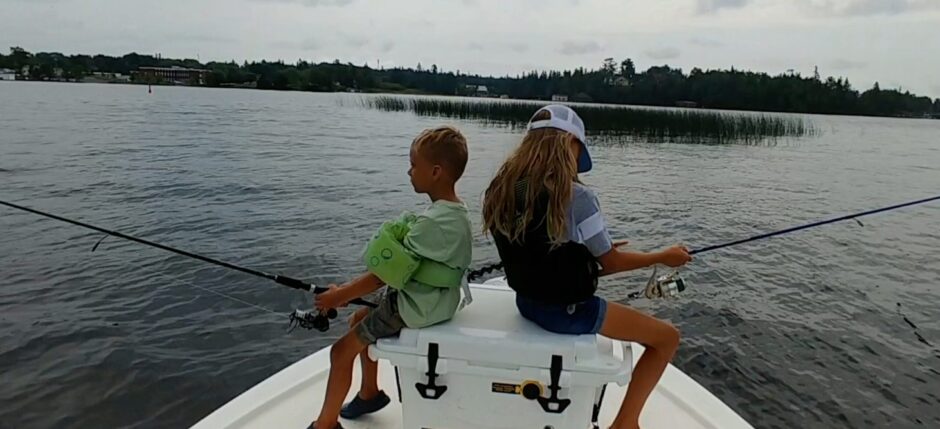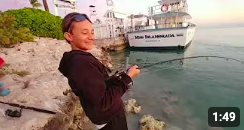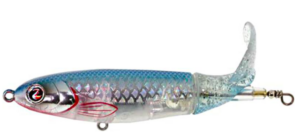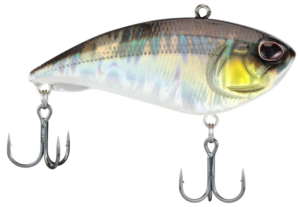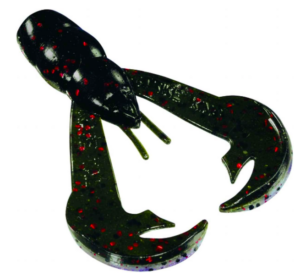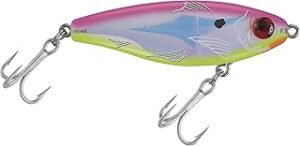⚪ White Bass Overview
White bass are hard-fighting, schooling freshwater fish known for their aggressive strikes and fast-paced action. Recognizable by their silvery bodies with horizontal stripes, they’re popular across lakes, rivers, and reservoirs throughout much of the U.S. Anglers love them for their numbers, energy, and predictability once located.
🌊 Lakes & Reservoirs
White bass can be found in lakes and reservoirs throughout most of the country. At times, these fish will school up in big numbers, which makes catching them a lot easier once you find them. In lakes and reservoirs, they can be found in many areas as the bait fish and water temperature will usually dictate where they may be on any given day.
🌊 Rivers
White bass can be found in many rivers and in some areas, there are rivers that are connected to lakes that drive some very large spawning runs every spring. Anglers catch them by the dozens during the peak of the runs. White bass do well in rivers and can be found throughout the river systems in many different areas. Current breaks, deeper pools, rocky shorelines, bridges, dams and spillways are all popular places to catch white bass in the rivers. Once you find them, it is fairly easy to catch them.
🎣 Fish the Current Breaks
The current breaks are key for most species of fish in a river and white bass are no different. Fish the pools with slack water and any other current break you can find in the river. White bass will be found in the current as well, but the areas where you have some decent current and then a nice current break will usually hold more fish.
🎣 Fish the Dams & Spillways
White bass can be found in the tailwaters below dams and spillways throughout the year, but you will find large concentrations of fish in these areas during the spring and fall. In the spring, huge numbers of white bass will move into the rivers and migrate upstream. Good numbers of these fish will not stop until they reach some type of barrier and this will usually be a dam or spillway. In the spring, when waters reach the low 50s, you can expect to find good numbers of white bass near the tailwaters. Once the water temperatures reach the low 60s, most white bass will be finished or close to finished with the spawn. Once the spawn is over, white bass will move back into the deeper river channels or back into the main lake / reservoir. The fishing will be inconsistent for most of the summer near the tailwaters, but it picks up again in the fall as white bass follow the bait fish upstream.
🎣 Best Techniques
🎣 Casting
It is very common to make lots of casts with lures and live baits to try to cover some water and find more white bass. Anglers use light gear so they can make longer casts.
🚤 Drifting
Drifting is a very popular technique for fishing live baits on lakes when the wind starts blowing and for river fishing too. Many anglers will use a simple bobber, split shot and minnow and cast upstream in the rivers and just let it drift downstream. You can also just drift down the river in your boat to cover more water too.
🎣 Jigging
Jigging is very popular especially when white bass school up in deeper water. It’s one of the better mid summer through fall techniques.
🪝 Still Fishing
When you get on a good spot, still fishing is tough to beat. Cast your baits out and let them sit until a white bass picks them up. Just know when it’s time to move spots or you may do a lot more watching instead of catching.
🧪 Best Baits
Live minnows
Shiners and small shad
Nightcrawlers (especially in stained water)
Cut bait from shad or other forage fish
🎣 Top Lures
Curly-tail grubs on 1/8 oz jigheads
Small crankbaits (shad patterns)
Inline spinners
Blade baits and jigging spoons
🧵 Gear Recommendations
Rod: Light to medium-light spinning rod, 6–7 ft
Reel: 1000–2500 size spinning reel
Line: 6–10 lb monofilament or fluorocarbon; 10–15 lb braid with leader
🎯 Catch Bigger White Bass
It’s All About the Destination
Just like any other fish, some destinations are much better than others. The easiest way to catch bigger white bass is to fish some of the destinations that are known for having good numbers of bigger white bass. There are a lot of places to catch white bass, but some are definitely a lot better than others. Take a look at our best destinations page for white bass.
Upsize Your Baits Just a Little
You don’t want to go too big, but an upsized minnow or jig can definitely help attract more quality fish. You are going to get less bites, however, the bites should be quality bites.
Don’t Miss the Spring Spawning Run
The spring spawning run is the very best time to target a large amount of quality fish. If you’re looking to consistently catch bigger white bass, this is the time of year to do it.
🗓️ Seasons
🌸 Spring Spawning Run
Fishing during the spawn is one of the most consistent ways to catch white bass. Some of the better rivers for white bass will have thousands of white bass moving upstream to spawn in the spring. Once water temperatures reach the low 50 to mid 50s, good numbers of white bass will be in the rivers. Typically, when the lilacs are in bloom, the white bass fishing hits its peak. It is common to see anglers report 50 to 100 fish days during the peak of the spring run. You can catch them with live minnows fished near the bottom or on a bobber. Some artificial lures that work well are curly tail grubs, small crankbaits, small spinners and small jigging spoons.
☀️ Summer
During the summer, most of the white bass will move back out of the rivers into the main lake. If there isn’t a lake connected to the river, you can usually find white bass spread out throughout the river in the deeper channels.
🍂 Fall
In the fall, good numbers of white bass will move back into the rivers as they follow the bait fish. The fishing can be very good in the fall, but don’t expect to find the large numbers of fish that you saw during the spring run.
❄️ Winter
Most anglers don’t target white bass through the ice, however, down south, there are plenty of lakes worth fishing for white bass. It is similar to late fall fishing up north. Fish deeper and find the bait fish. They will likely school up around the bait balls.
⛅ Weather
The weather definitely plays a role with white bass, however, it isn’t as big of a factor as with some other species of fish. White bass like to eat and if you can find the bait fish, you can usually catch some fish. At times, they can be very easy to catch and at other times, you will have a hard time finding them. If you find them though, you should catch fish whether it is cloudy, sunny, rainy, windy or calm.
